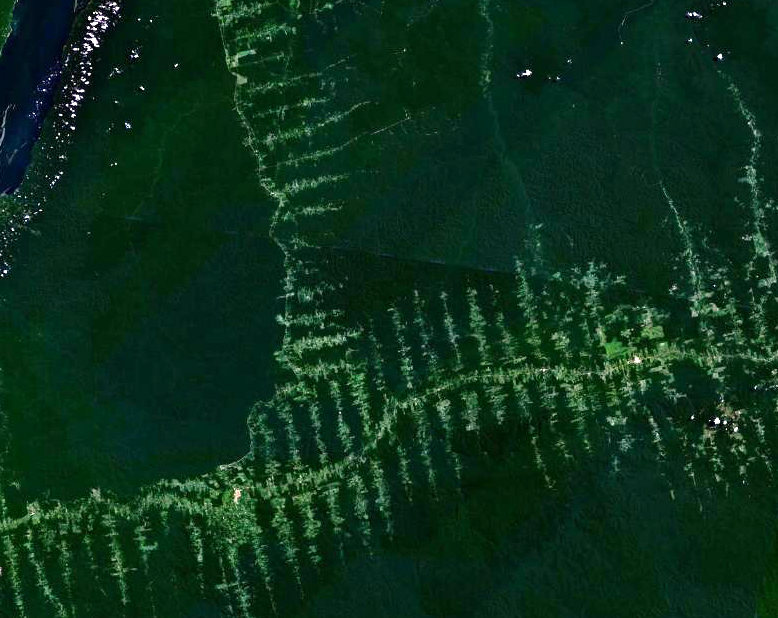
Every minute, an area the size of 50 soccer fields is destroyed in the Amazon Rainforest. Over the past 40 years, nearly 20% of the forest has been destroyed – an area roughly the size of Alaska. Simply put, in less than half of a century more of the rainforest was destroyed than in the previous 450 years – combined. High-resolution satellite images tell a story of devastating deforestation in the planet’s largest and most diverse rainforest. Many areas that were once a sea of lush greenery have been transformed into a barren, muddy landscape.
The Amazon represents more than half the remaining rainforest on the planet. Humans depend on these ecosystems as a source for the planet’s carbon, water, and climate systems. Thus, it isn’t surprising that losing 2.3 million square kilometers of forest in a mere 13 years, as new research indicates, is of great concern to both environmental groups and national governments. While the majority of the Amazon is located in Brazil, the forest expands across nine countries making deforestation an international crisis.
With 20% of the forest already cut down and another 20%, as expected by scientists, to be on the chopping block over the next two decades, it is only a matter of time until the Amazon’s ecology will begin to collapse. Adding global warming to the mix makes the outlook seem worse. Over 100,000 miles of illegal roads, forged by loggers who aim to reach the prime hardwood trees deep in the forest, snake through the labyrinth of vegetation. Consequences of these new roads turn out to be equally as destructive as the actual logging. Land sharks slide in unnoticed and claim the land making land thievery a common crime. As is the case with many lucrative businesses, with high profits comes violence and corruption. Armed guards, hired gunmen, and corrupt government officials all help to facilitate these illegal activities.
It isn’t all bad news for the Amazon, however. Since the devastating revelation in the early 2000s, Brazil and other South American countries have committed to reversing the damage. New data shows that while Brazil still suffers from very high rates of forest clearing, the country has cut the annual rate of forest loss to half of what it once was. In turn, many of the strategies that Brazil has implemented as a deterrent to deforestation will help policymakers in other countries respond to the troubling rates of forest decline.
Nonetheless, the deforestation rates of 2013 were far from encouraging. It is clear that changes have to be made, as deforestation is threatening the local populations’ basic needs. In the most recent Amazonia Security Agenda, it was reported “compromising Amazonia’s ecosystems, deforestation is now threatening not only the wellbeing and rights of the region’s people, but also the economic sustainability of the very industries that it has enabled.” Scarcity of food, water, and even energy are all threatened by exploitation of the Amazon.
Escalations in forest clearing are primarily being blamed on the weakening of legal protections in the Brazilian Forest Code that were passed under Brazilian President Dilma Rousseff. The reform was riddled with controversy, and was heavily supported by members of the farmer’s lobby known as the ruralists. In Brazil, where agriculture accounts for 5% of the country’s GDP, lobbyist influence has indirectly led to increased deforestation by loggers and farmers. At the United Nation’s Summit on Climate Change, the environment minister, Izabella Teixeira, chose to focus on Brazil’s triumphs, noting the overall trend was has been positive. She attributed the elevation in deforestation to organized crime and acknowledged that the government had taken steps to fight back, saying: “What is happening are crimes, we have 3,921 police investigations, some of them involving civil servants. We are cutting into our own flesh.” Teixeira strongly emphasized that eliminating illegal deforestation remained the goal in the eyes of the government and the crimes of loggers would not be tolerated. Going forward, it is up to the Brazilian government and their counterparts, as well as the global community, to secure the future of the world’s most important forest.






